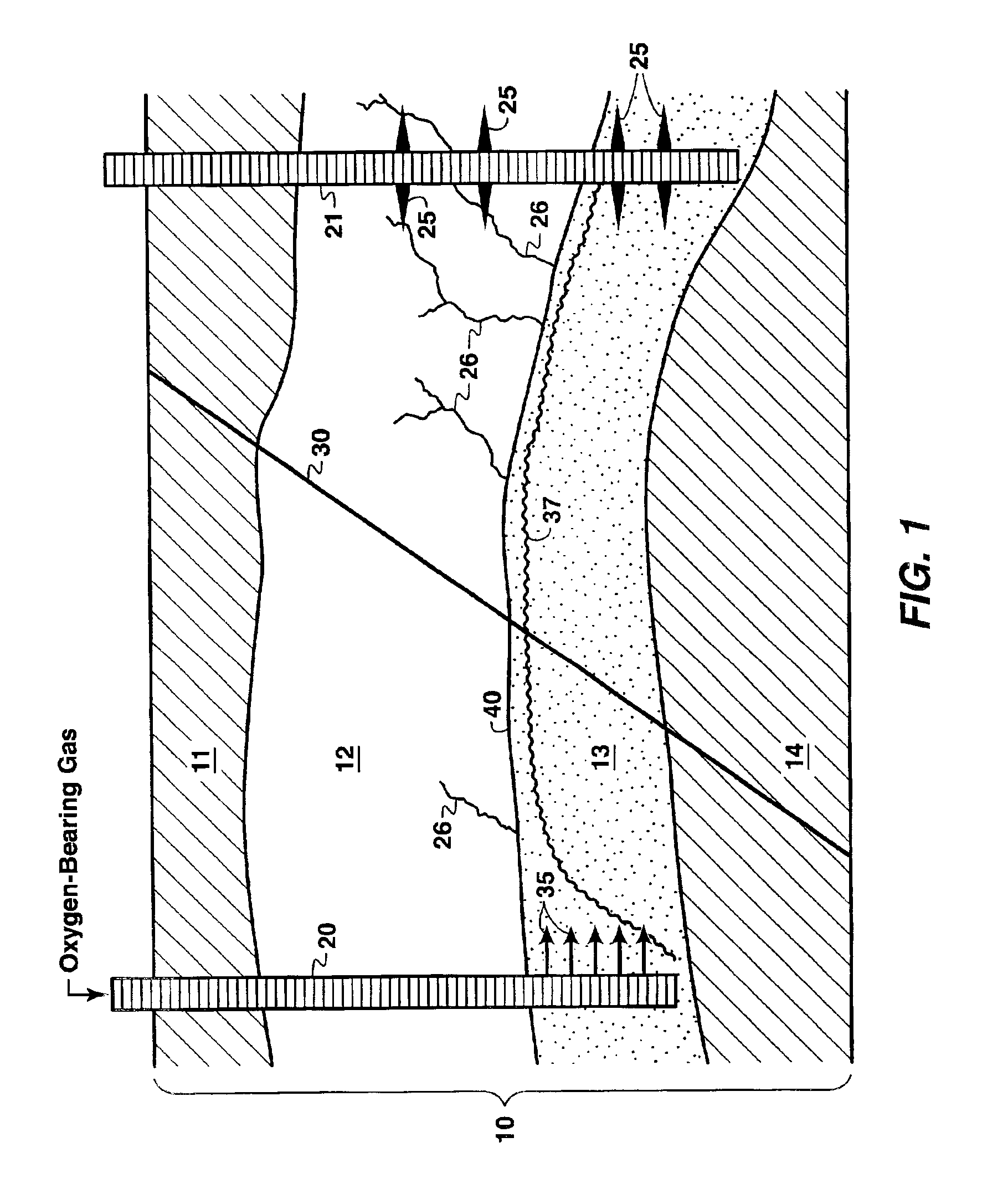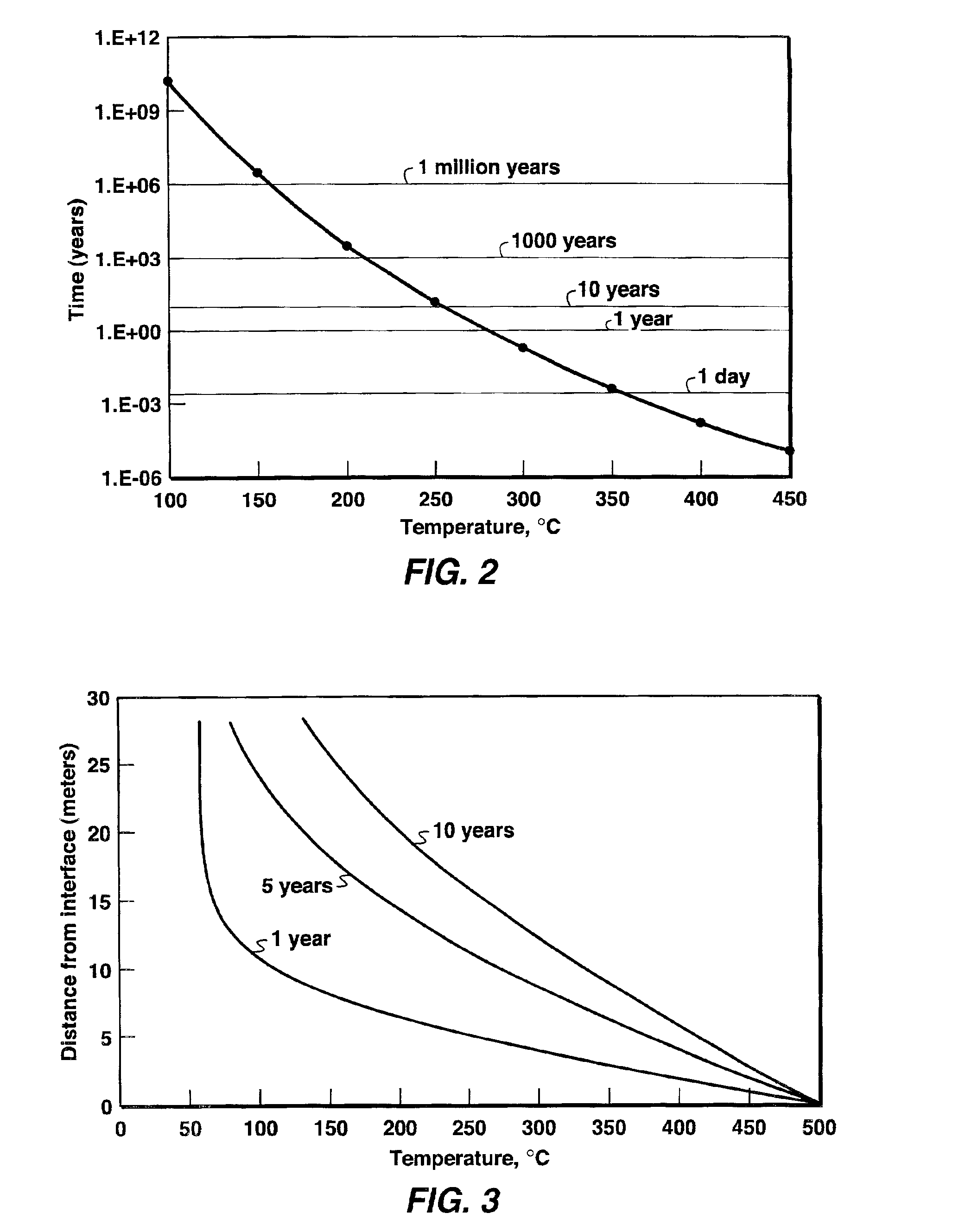Method for production of hydrocarbons from organic-rich rock
a technology of organic rich rock and hydrocarbons, which is applied in the direction of fluid removal, chemistry apparatus and processes, and wellbore/well accessories, etc., can solve the problems of high production cost, inability to readily liberate kerogen from shale or other source rocks, and extremely slow process
- Summary
- Abstract
- Description
- Claims
- Application Information
AI Technical Summary
Benefits of technology
Problems solved by technology
Method used
Image
Examples
Embodiment Construction
[0019]The method of this invention overcomes the limitations of the prior art and enables the commercial development of organic-rich rocks such as oil shale. The method solves the problem of providing a sustained, high intensity and penetrating heat source to convert kerogen to producible hydrocarbons by using reservoir-quality strata in the vicinity of the organic-rich rocks as a heat source.
[0020]In the method of this invention, in situ recovery of hydrocarbons from shale can be achieved without rubblizing the organic-rich rocks to allow the injection of fluids into them. Instead the method utilizes a nearby or adjacent reservoir, such as a partially depleted oil or gas reservoir, as the source of heat that is conducted into the formation containing the organic-rich rocks. This method, therefore, avoids costly rubblization and the drilling of multiple, closely spaced wells which are used as heat sources, but which have limited penetrating range.
[0021]In a preferred embodiment of t...
PUM
 Login to View More
Login to View More Abstract
Description
Claims
Application Information
 Login to View More
Login to View More - R&D
- Intellectual Property
- Life Sciences
- Materials
- Tech Scout
- Unparalleled Data Quality
- Higher Quality Content
- 60% Fewer Hallucinations
Browse by: Latest US Patents, China's latest patents, Technical Efficacy Thesaurus, Application Domain, Technology Topic, Popular Technical Reports.
© 2025 PatSnap. All rights reserved.Legal|Privacy policy|Modern Slavery Act Transparency Statement|Sitemap|About US| Contact US: help@patsnap.com



